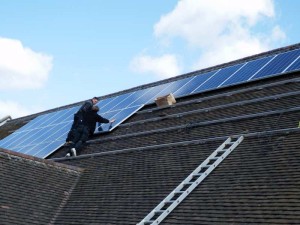The Green Deal Push
You maybe aware that in order to apply for the Renewable Heat Premium Payment you’ll need to get a Green Deal assessment. This was introduced with the increased payments a couple of months ago. Previously only an EPC certificate was required.
Whilst this introduced an additional cost and complication to the process of installing renewable energy, we at Complete Renewables are pro the move. A Green Deal assessment is a handy way for home owners to get an honest impression of the improvements they can make to their home. And any encouragement for home owners to adopt renewable energies is a positive in our book. Furthermore, we often find ourselves installing solar panels in rural parts of Essex which are not on mainline gas. These homes are generally paying large amounts to heat their homes and could benefit greatly from an air or ground source heat pump.
Today we received a letter from Greg Barker MP, minister for the Department of Energy and Climate Change. Summarised, the minister is encouraging MCS certified installers of renewable energy to consider becoming involved in the Green Deal. His request is broad; raising the potential to become a Green Deal assessor, installer or Green Deal Finance Provider. It’s fairly obvious these efforts are in response to a general lack of interest, or at least not quite the level of interest the government was hoping for. However this shouldn’t necessarily be seen as a desperate sign that the Green Deal simply isn’t working. Instead, and more likely, the Green Deal just needs a strong helping hand; it good to see the minister active in it’s promotion.
Whilst we’re keen to respond to Greg Barker’s call to action, it will need to be met with customer demand. We are currently experiencing a strong increase in the number of installations of heat pumps and solar panels. However our customers are rarely interested in the Green Deal. Whilst many of them are vaguely aware of the Green Deal, they are not aware of how they may benefit.
Being a small business, attempting to educate our customers on the benefits of the Green Deal is a huge endeavour. What we really need is a greater public promotion. It’s a far more achievable target to respond to a customer’s interest in a service, than to create that interest in the first instance. I’m not suggesting that the government does the promotion and we’ll do the selling, but rather ‘you promote the theme and I’ll promote the specifics’.












